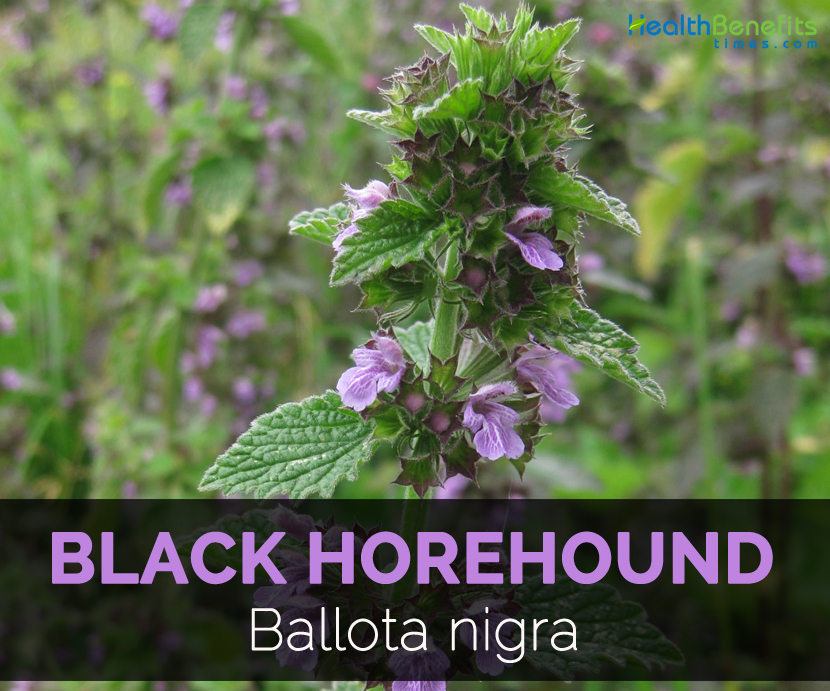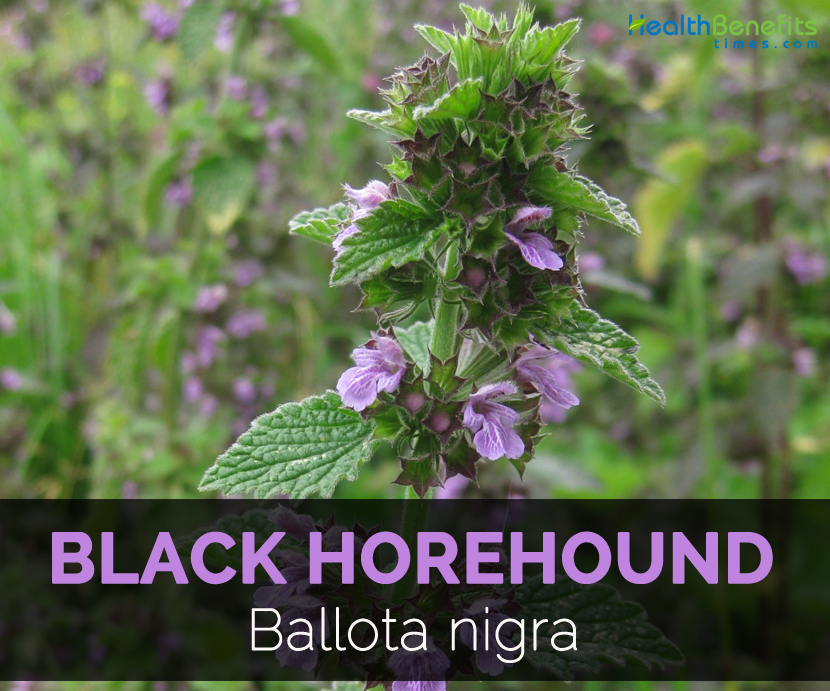| Black Horehound Quick Facts | |
|---|---|
| Name: | Black Horehound |
| Scientific Name: | Ballota nigra |
| Origin | Native to Mediterranean region and Central Asia. It is available throughout Europe. It is naturalized in New Zealand, Argentina, and Eastern United States. |
| Shapes | Ovoid, 12 mm long |
The plant prefers well-drained and moist soil. Black horehound plant prefers full sunlight and partial shade. It grows in wild so it should be kept away from acid soils and is able to tolerate low pH to 5. It is able to bear low temperatures to -10 to -5 ° C. It is found in waysides, hedgerows and waste ground on disturbed nutrient rich soils in areas which ranges from full shade to no shade. The term Ballota was derived from the Greek word ballo which means to reject and nigra refers to black color of dried leaves. Black Horehound provides offensive smell and unpleasant odor. It has stout, branching stems with fibrous root system. Black horehound is used as a treatment for bites of mad dogs, snakes, antidote to vegetable poisons and eliminates intestinal worms. Being an emenagogue, it restores the balance of menstrual cycle.
Flower and Fruit
Flowers measures about 1-1.5 cm long. It is made up of five sepals which are fused together in a tube with five teeth. The labiate corolla measures 12-13 mm and its color ranges from pink to purple to white. The corolla has tube of 6 mm with two lips. The lower one is glabrous with two lateral lobes; and the upper one is slightly concave and is externally hairy. It is arranged in 4-10 loose and short stemmed cymes in axils. The superior ovary has two parted stigma and single white style. Calyx is funnel shaped and has five awned tips. Stamens have hairy base and small spreading pollen sacks. The flower later on turns into a nut. Nuts are smooth, ovoid in shape and measures 12 mm long.
Stem and Leaves
Horehound has sturdy, branches, upright and angular stems. The plant is fresh green and pubescent. Leaves are opposite and decussate, oval to lanceolate to heart shaped with dentate or crenate border. The pubescent, dark green leaves measures 3-8 cm per 2-6 cm and petiole is about 1-3 cm. Lower leaves are ovate to round and are 2 cm long. Leaf blades are 1.5-3.5 cm wide.
Traditional uses
- Black Horehound is useful for vomiting, nausea, vomiting and nervous dyspepsia.
- It is useful for hypochondria, hysteria, spasms, whooping cough, stomach cramps and for increasing bile flow.
- Horehound also treats nausea, upset stomach and vomiting.
- This herb is used in France for nervous disorders in children and adults, mila sleep disorders and coughs.
- Use it externally for gout.
- It provides relief from nervous disorders.
- Black horehound helps to eliminate intestinal worms.
- The herb is used for motion sickness and nausea caused due to nervousness.
- Use it orally for gout and arthritis.
- It is used by ancient people as a treatment for rabies.
- Black horehound was used for convulsions, menopause, low spirits and problems associated with respiratory system.
- This herb is helpful for asthma, bronchitis and coughs.
Precautions
- Avoid its excessive use.
- Not recommended to use by children, pregnant and breast feeding women.
- Avoid by psychotic disorders and schizophrenia patients.
- It might interact with specific drugs or supplements, iron supplements and counting sedatives.
- Black Horehound could obstruct with the body’s ability of iron absorption.
- People who are allergic to Black horehound should avoid it.
- In the people with Parkinson’s disease, Black horehound could interfere with the dopamine action in the brain.
References:
https://www.itis.gov/servlet/SingleRpt/SingleRpt?search_topic=TSN&search_value=32456#null
http://davesgarden.com/guides/pf/go/74141/
https://npgsweb.ars-grin.gov/gringlobal/taxonomydetail.aspx?id=104824
http://pfaf.org/user/Plant.aspx?LatinName=Ballota+nigra
http://www.floracatalana.net/ballota-nigra-l-subsp-foetida-hayek
http://www.herbs2000.com/herbs/herbs_horehound_black.htm
https://www.henriettes-herb.com/eclectic/hool/black-horehound.html
http://healthnbeautyarticles.blogspot.com/2015/07/black-horehound-ballota-nigra-overview.html
Comments
comments

